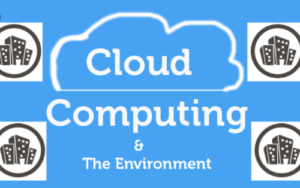Now that we know a bit about what the Cloud represents as a platform, I think it would be appropriate to focus on how this phenomenon has been possible. As I mentioned a few lines above, it has been a progressive evolution in different areas of the so-called Information Technologies.
In terms of the Internet services platform, the evolution has gone from a simple dial-up Internet provider to the looming reality of an enterprise-grade software application platform in the Cloud.
At first, Internet service providers focused solely on establishing the connectivity infrastructure necessary for individuals or businesses to access the World Wide Web. For their part, companies were focused on building their own network infrastructure.
Later, with the “Boom” of the Internet, the focus of Internet service providers was oriented to provide access to their Web servers (at that time still with limited resources) so that customers can host their Web sites and have a presence On the Internet.
Later on, the concept of housing became important, in which companies host their own servers in the large data centers of Internet service providers. Under this model, once IT and communications tasks have been delegated to the specialized provider in the field, companies can focus on what is really important for their business, and can even take advantage of their own network facilities and their width of band for other exclusively internal uses.
A growing offering of subscriptions to software services has emerged lately so that customers do not have to worry about the details of the underlying infrastructure. It is here that it is the software manufacturers who have taken the initiative and take advantage of the Internet not only as a means to offer their services to their customers but as a platform for those services.
In the near future, as the different aspects mature (among them security, interoperability, and connectivity stand out for their importance) of the different “Cloud Computing” platforms, the Cloud will finish consolidating as that great platform of services in which will be totally transparent for companies to consume their services as if they were on-premise solutions, with the obvious advantage of using resources tailored to their needs at all times. In this way, it will be possible to have complete solutions in which it is relatively easy to integrate the platform in the Cloud with the on-premise platform. and, eventually, depending on the particular needs of each client, a large part or even the entire infrastructure of the organization could be migrated to the Cloud.
So far we have given a quick review of the evolutionary process of the services provided by Internet Service Providers. However, to arrive at the Cloud computing proposal, he has not only had to see the evolution of Internet services. Another important factor that has also been subject to this evolution is the one represented by the devices with which the user can access these services, and the applications provided through these services. Computers have also undergone a similar evolution that has brought us to our current reality. The following phases stand out in this evolution:
Traditional PCs and Laptops are the undisputed protagonists of this evolution because although they are still in force, it is some of their aspects that have led to the evolution of client computers used by companies. A key factor driving this evolution is the cost of both hardware and computer software licenses.
As an alternative to traditional PCs, Network Computers (NCs) initially emerged, the first generation of thin clients. These computers had cheaper components and software than PCs but lacked storage units, which required a file server to store the information. The NCs differed from the old dumb terminals in that the latter used the processing resources (memory and processor) of the mainframe to which they were connected, whereas the NCs had their own, but much more limited than those of the PCs, so that they could only run a web browser and a few downloaded applications. This wave started by Oracle NCs was joined by some other manufacturers, including IBM with its Network Station and Sun with their Java Station. Finally, when solutions emerged to use traditional PCs such as NCs, these types of devices were being discontinued.
During the last 2 years there has been an explosion in the demand for mobile devices such as Smartphones and Netbooks, and this trend is only accentuated with the emergence of increasingly lightweight devices with better features, and how not to mention it? Prices are also decreasing as technology improves. Netbooks are small laptops mainly designed for mobility and Internet access. Perfect for consuming applications in the Cloud, don’t you think? These Netbooks have their origins in the small and cheap (but robust) laptops of the One Laptop per Child program (ULPN or OLPC, for its acronym in English) aimed at providing any child in the world with knowledge of and access to information technologies as modern forms of education. The success of the program prompted different manufacturers to develop laptops with the necessary characteristics to be able to provide mobility, reasonable processing capacity, and, above all, access to wireless networks and the Internet. This new generation of devices is primarily geared towards the consumer market, but could also be leveraged at an enterprise level as performance improves.
It is becoming clear how the technological advances that have taken place in the last decade have paved the way for the emergence of this new computing paradigm that cloud computing represents, with an Internet platform on which various optimized services and client devices can be mounted to consume the services provided by the said platform. In the next article, we will review the XaaS (Everything as a Service) trend that has emerged as part of the cloud computing model.



